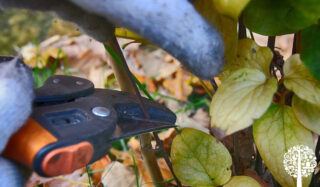Clematis Lovers, Get Pruning! | Garden Culture Magazine
I love clematis! My tiny urban garden boasts over 16 varieties that bloom from early spring to late fall. The key to making this succeed is knowing which pruning group or sub-group the plant belongs. There are three main categories, so here are the 1,2,3s of pruning groups A, B, and C of clematis.

Group A
This group includes the Montana spring blooming varieties and the evergreen clematis armandii series. This group flowers early to mid-spring off the previous year’s growth; it’s essential to prune as soon as the plant finishes flowering in May or June. They are prolific growers and will send out new shoots as soon as the flowers start to fade, so catch them before then and do not cut off any new growth needed for next year’s flowers. Thin and shape the vine by cutting out weak or dead stems.
Group B
This group is divided into two sub-categories: B1 and B2. Both will benefit from pruning in February or early March.
Group B1: This group flowers off the old wood from the previous season in spring and new summer growth in September. In late winter, cut back any dead wood but don’t give the plant a severe pruning, as this will hamper the first flush of late spring flowers. After the blooms die in late June or early July, de-tangle the shoots to give space for new growth and the next flush of flowers in September.
Group B2: This variety blooms simultaneously on last year’s growth and the current season’s new wood from June to September. Prune them according to Group B1. Or, they can fall in line with Group C and be cut back hard to the first or second set of healthy buds in late winter.
Group C
Group C clematis are prolific growers and will always appreciate a hard prune that keeps them shaped and healthy. Blooming off the current year’s growth in early summer and continuing to fall, they should be cut back hard in late February or March. I cut mine down to the second set of healthy buds closest to the ground, but it’s also possible to create a column effect by staggering the cuts. Start by clipping one shoot to the second set of healthy buds closest to the ground, then move along to a second shoot and clip it to the third set of buds up from the ground. Continue until you reach your desired height of about 4 or 5 feet up the vine.

One of the best ways to ensure that you are pruning the right plant the right way is to hang onto the tag that comes with it. If in doubt and you just aren’t sure which group your clematis falls into, watch its growth pattern over the season. Group B2 will flower again, giving you a clue about its category. Group A won’t bloom in the summer.
Clematis are sometimes called the Queen of Vines. The secret to their elegance lies in how they are cared for and pruned. It’s as easy as A, B, C!




